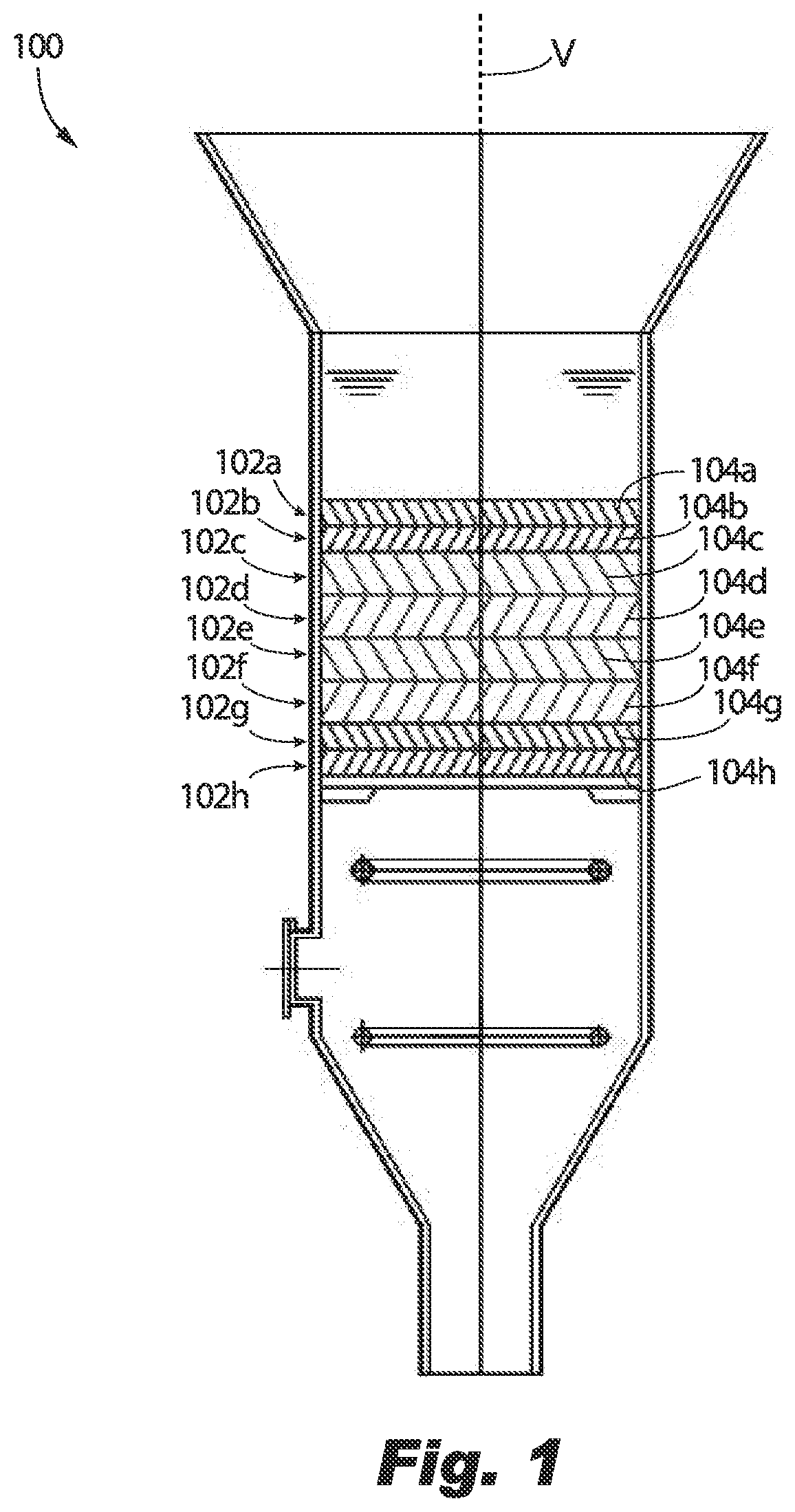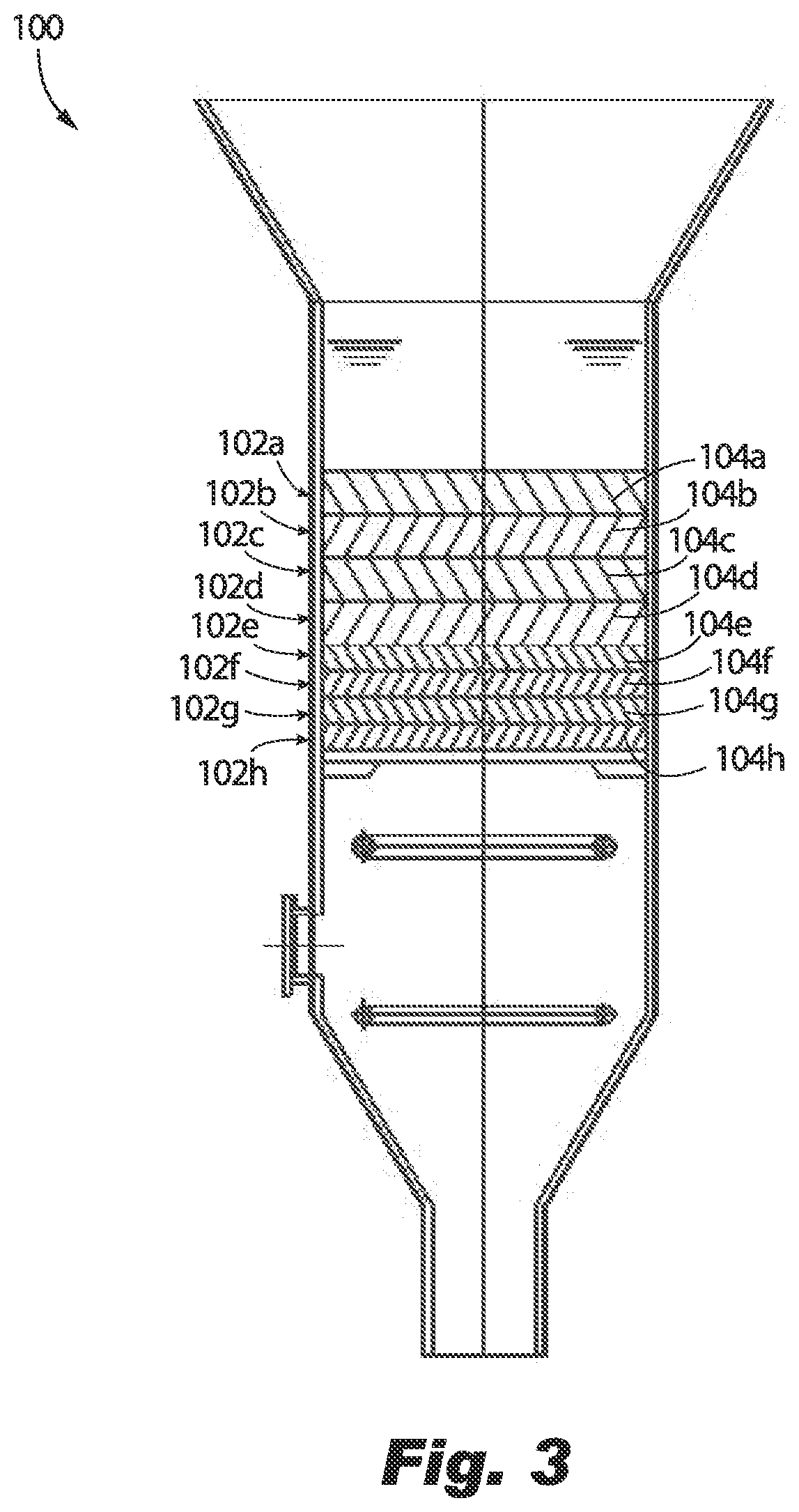In fact, insufficient stripping results in the reactor
effluent remaining on and in between the catalyst particles so that during the regeneration step an additional
combustion load is imposed upon the regenerator with excessive heat production beyond the heat needed to drive the catalytic reaction.
As a result, the
combustion of entrained hydrocarbon vapors into the regenerator represents a loss in final yield of converted product.
In a FCC stripper vessel, it tends to be difficult to control the travel of the catalyst particles and to avoid partial de-
fluidization linked with channeling (direct passage of large bubbles through the deep
fluidized bed or preferential down flow of catalyst towards one side of the vessel) and with back-mixing (down flow of poorly fluidized particles or even recirculation of such particles, especially in the region of the stripping chamber wall).
Thus, the average stripping time of deactivated catalyst particles and the quality of contact between catalyst
particulates and gaseous fluid are difficult to control.
Additionally, any mal distribution or
preferential flow pattern of gas vapors and catalyst particles can limit the catalyst circulation capability through the stripper vessel.
Generally, an excessive amount of steam is required in such scenarios to achieve sufficient stripping efficiency.
The excess steam increases the gas and liquid load on equipment connected to the stripper.
For example, the excess steam can increase the quantity of sour water produced per pound of hydrocarbon processed, as well as increase the operating costs for producing and
processing the excess steam.
Moreover, the device reduces the back-mixing and channeling of the particles and the formation of
solid or gaseous pockets within the stripping chamber.
Once initiated, channeling is very difficult to stop and there may be almost complete bypassing of the two phases.
Once a “clear
stream” of either phase is formed the existing packing is not very effective at redistributing it, inspecting the actual packing shows that a
single phase can travel considerable distances within, and between, the
layers.
Once they reach the next layer there is limited potential for redistribution and the
single phase will continue and potentially grow.
Another limitation of the existing design is the two directional arrangement of the blades which provides approximately 95% open cross-sectional area and limits radial mixing.
As a result of this, upward flowing steam is also not uniformly distributed within the elements and when it leaves the top of the packing, which further reduces the usage of the steam to strip the hydrocarbons
The active catalyst flow region close to the SCSP entrance results in high catalyst velocity because the catalyst is only flowing through a reduced stripper cross-sectional area.
Existing packing designs are quite dense in terms of blade count and there is significant weight that must be supported.
However, it has often not produced the expected performance improvements; raw stripping efficiency (manifested as H2 in
coke and regenerator temperature), pressure build up and steam consumption.
Current
structured packing elements have various limitations, for example, reduced mixing of the stripping gas and catalyst because a portion of gas
stream tends to flow up along the underside of planar portions or blades and a portion of catalyst
stream tends to flow down the top side of the blade with little or no interaction between the gas and catalyst.
Despite the flow direction of each element or layer of elements being 90° oriented to each other the continuous blade surfaces do not provide good re-distribution of catalyst and gas throughout the depth of the
fluidized bed.
 Login to View More
Login to View More  Login to View More
Login to View More 


